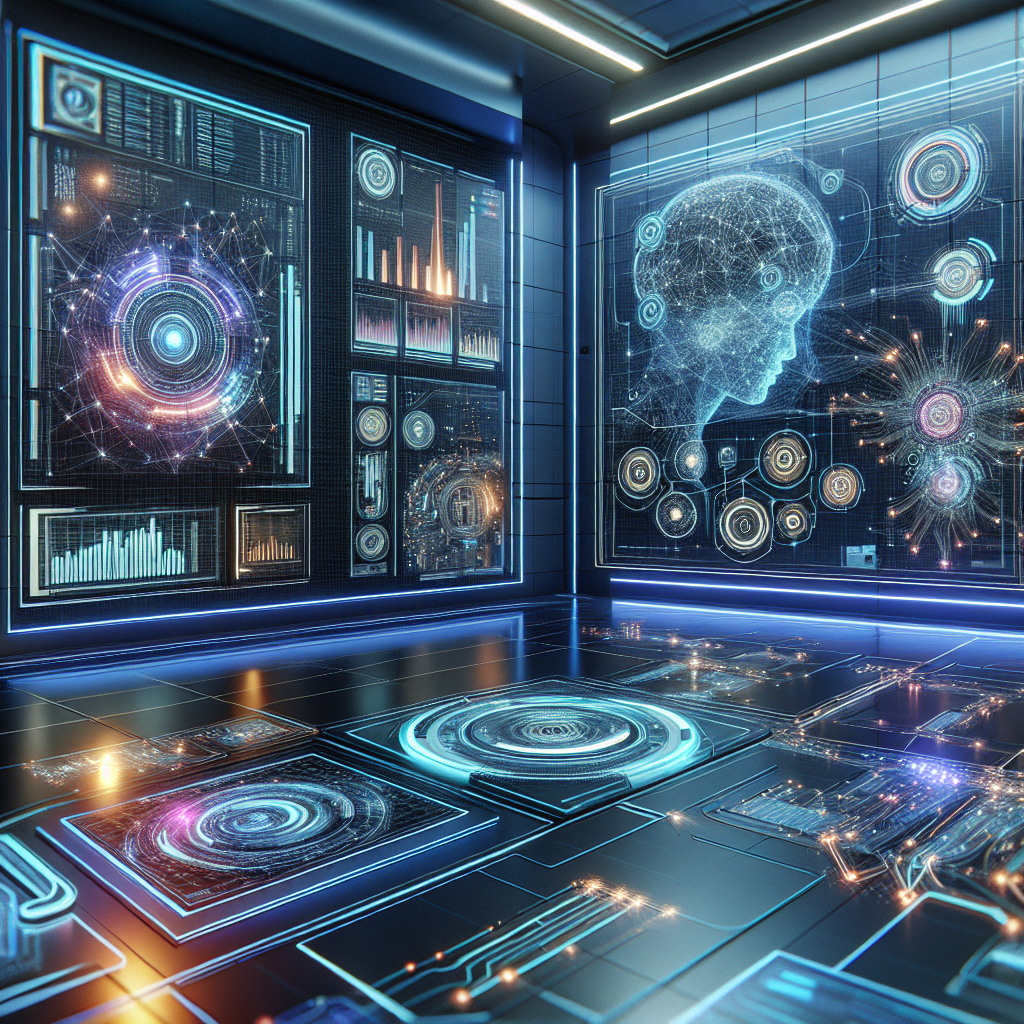Unveiling the Mystery of the Grock 2 Model: A New Era in AI Technology
In today’s rapidly evolving technological landscape, the advent of AI models is both exhilarating and daunting. Recently, the buzz has been all about the Grock 2 model developed by X AI. This piece explores the revelations surrounding this enigmatic AI and its implications for the broader field. As we peel back the layers of intrigue and speculation, it becomes clear that Grock 2 isn't just another AI iteration; it's a game-changer that’s ready to shake things up.
The Arrival of Grock 2: What We Know
For those who have been following the trajectory of AI development, the announcement of Grock 2 comes with a palpable sense of anticipation and excitement. Initially, there was a whirlwind of speculation as many believed this model was associated with OpenAI. However, the truth is far more tantalizing. As it turns out, Grock 2 is indeed a product of X AI, a venture spearheaded by Elon Musk. This revelation not only clarifies the model's origins but also amps up the stakes in the ongoing competition in AI technology.
The community was abuzz when experts confirmed that Grock 2 has pulled ahead of its competitors in impressive ways, achieving a ranking that ties it with the current May version of the widely celebrated GPT-4 Omni. This performance places Grock 2 in a rarefied air among AI models, indicating not just a minor upgrade, but a significant leap in capabilities that may redefine user expectations.
Breaking Down the Buzz: Why Grock 2 Matters
What makes Grock 2 particularly noteworthy is its ability to perform exceptionally well in real-world applications. The model has been widely praised for its nuanced understanding and remarkable capacity for contextual awareness. Early demonstrations have illustrated Grock 2's proficiency in language processing tasks, setting it apart from its predecessors and contemporary counterparts. This isn’t just a flashy new tool—it's a robust platform primed for practical use cases across various industries.
Moreover, Grock 2’s contribution to AI doesn’t merely reside in its performance metrics. Its underlying architecture signifies a shift toward more sophisticated models that can grasp and engage in conversations with unprecedented depth. The implications of this technology stretch far beyond mere chatbots or virtual assistants; they touch on areas such as creative writing, coding, and even decision-making processes within enterprises.
A Closer Look at the Technology Behind Grock 2
Diving deeper into the technical aspects, Grock 2 stands out due to the advanced neural network algorithms that power its functionality. These algorithms have been fine-tuned to effectively process large datasets and create more intuitive user interactions. The improvements in the natural language processing capabilities contribute to its ability to understand context better than previous models.
Furthermore, Grock 2 benefits from a strong foundation in reinforcement learning, allowing it to adapt and refine its outputs based on user interactions. This capability is critical in making the AI not just efficient, but also responsive to changing dynamics and user needs. Companies and developers seeking to harness the power of AI can consider Grock 2 as a strategic asset in their digital toolkits.
Implications for the Future of AI
As AI technology accelerates, the rise of Grock 2 raises essential questions about the future of AI and its integration into our lives. What does it mean for businesses, education, and society as a whole? For businesses, the implications are vast: improved efficiency, enhanced customer engagement, and the ability to make informed decisions based on complex data analysis are all within reach.
In education, AI models like Grock 2 can revolutionize personalized learning experiences, adapting to individual student needs and learning styles. Imagine a classroom where every student has access to a tailored AI tutor that grows with them. The potential for such applications is immense, transforming traditional educational paradigms.
Furthermore, the advent of powerful AI models poses ethical considerations that must not be overlooked. With great power comes great responsibility, and as Grock 2 sets a new standard for AI capabilities, stakeholders in technology, government, and civil society must engage in conversations about regulation, ethics, and the long-term societal impacts of these advancements.
The Competitive Landscape: How Grock 2 Stacks Up
In the context of the current AI landscape, Grock 2's emergence poses an interesting dynamic among existing players. The competition is fierce, with numerous tech giants and startups all vying to dominate the AI scene. However, Grock 2’s distinctive characteristics and performance metrics suggest that it has the potential to carve out a significant niche.
With major players like OpenAI and Google continually enhancing their models, Grock 2’s ability to hold its ground against such titans speaks volumes. The AI community is eager to witness how these advancements will push each entity to innovate and improve further.
For more in-depth discussions on the competitive AI landscape, visit:
Conclusion: Embracing the Future with Grock 2
As we stand on the precipice of a new era in artificial intelligence, the unveiling of Grock 2 by X AI is not merely a technological milestone; it's a clarion call for all to engage with the possibilities that lie ahead. From its robust performance to its real-world applicability, Grock 2 represents the next step in the evolution of AI, paving the way for advancements that could fundamentally reshape industries and societies alike.
In summary, Grock 2 has emerged at a pivotal moment, reminding us of the extraordinary potential of human ingenuity and technological progress. For those who dare to dream, this AI model could very well be the beginning of something transformative.
To keep up with the latest in AI advancements, check out additional resources that explore the intricacies of these technologies and how they are changing our world.
